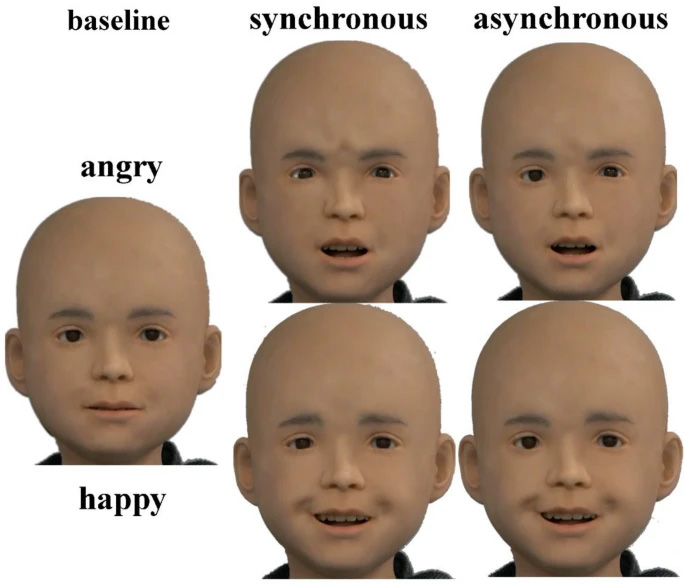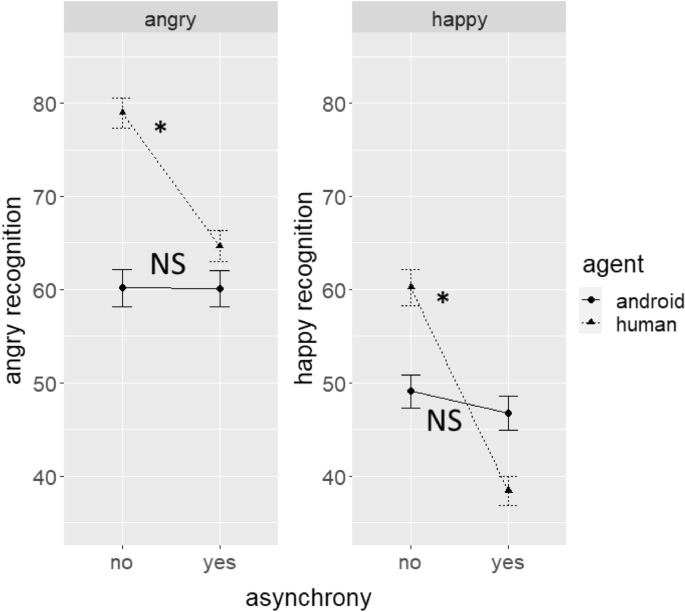SATO Wataru Laboratory
Differences in configural processing for human versus android dynamic facial expressions
(Diel, Sato, Hsu, & Minato: Sci Rep)
Humanlike androids can function as social agents in social situations and in experimental research.
While some androids can imitate facial emotion expressions, it is unclear whether their expressions tap the same processing mechanisms utilized in human expression processing, for example configural processing.
In this study, the effects of global inversion and asynchrony between facial features as configuration manipulations were compared in android and human dynamic emotion expressions.
Seventy-five participants rated (1) angry and happy emotion recognition and (2) arousal and valence ratings of upright or inverted, synchronous or asynchronous, android or human agent dynamic emotion expressions.

Asynchrony in dynamic expressions significantly decreased all ratings (except valence in angry expressions) in all human expressions, but did not affect android expressions.
Inversion did not affect any measures regardless of agent type.

These results suggest that dynamic facial expressions are processed in a synchrony-based configural manner for humans, but not for androids.
Return to
Recent Research.
Return to
Main Menu.

